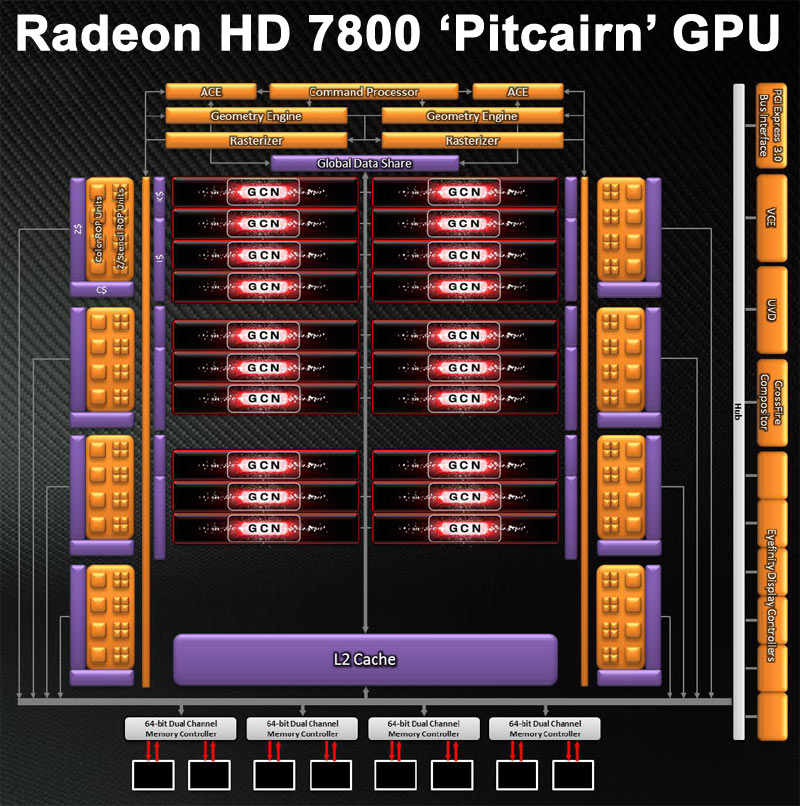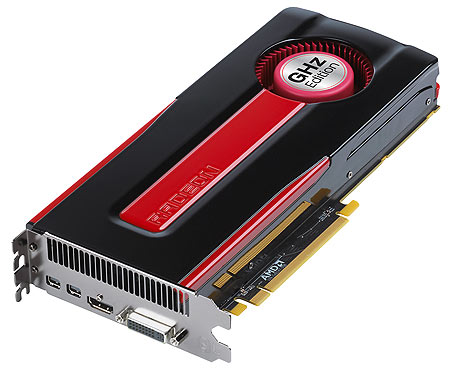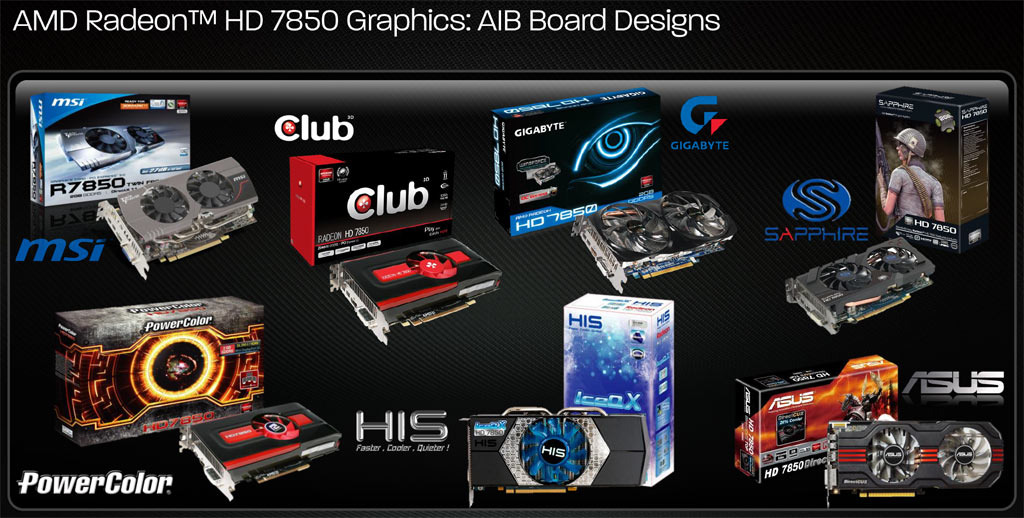AMD Radeon HD 7870 And 7850 Review: Pitcairn Gets Benchmarked
There's a big hole in between AMD's $450 Radeon HD 7950 and its $160 Radeon HD 7700. Today, the company introduces Radeon HD 7850 and 7870 to fill that gap, and they push a lot more performance than we expected. But are they really ready for prime time?
Radeon HD 7870 and 7850: A Paper Launch by Any Other Name
If you follow the graphics industry, you probably already knew today’s AMD Radeon HD 7800-series launch was happening. The company told us to expect this back in December when it introduced Radeon HD 7970. It reminded us in January when the Radeon HD 7950 debuted, and again in February during the Radeon HD 7770 and 7750 briefings.
Consequently, we’re also not surprised that, as the Radeon HD 7870 and 7850 became public knowledge, supply of the Radeon HD 6970 and 6950 dried up. After all, it’s hard to recommend last generation’s card, still priced competitively, when it’s no longer for sale. The new models replace those older cards with similar suggested prices of $349 for the 7870 and $249 for the 7850.
Another Paper Preview Launch
Unfortunately, although we’re able to talk about the performance of Radeon HD 7870 and 7850, you won’t be able to buy the card until at least March 19th, AMD tells us. The company says that, because CeBIT and the Game Developers Conference fall so close to the official launch, it’d be difficult to keep information about the cards under wraps. Regardless of the explanation, it sucks to wait another two weeks for street pricing and a better feel for availability.
Cynicism aside, we’re still technology geeks at heart, and we’re desperately curious to know how the 7800-series cards measure up to the Radeon HD 6900s, which earned our affections in the past for their conservative power use, excellent CrossFire scaling, and rich display connectivity compared to Nvidia’s GPUs with two independent pipelines.

This is the third distinct Graphics Core Next-based ASIC from AMD in as many months. Code-named Pitcairn, we finally have a solution in between the flagship Tahiti and the entry-level Cape Verde. The graphics processor is composed of 2.8 billion transistors in a 212 mm2 die manufactured on TSMC’s 28 nm lithography node. That’s nearly twice as large as the GPU at the heart of Radeon HD 7770, but around two-thirds of Tahiti, which drives the Radeon HD 7970.
Pitcairn hosts 20 compute units, each with four vector units made up of 16 stream processors and a single texture unit. In an uncut GPU, those numbers multiply out to 1280 total shaders and 80 texture units. AMD shears off four compute units from Pitcairn to create the Radeon HD 7850, resulting in 1024 shaders 64 texture units.
Get Tom's Hardware's best news and in-depth reviews, straight to your inbox.
The GPU’s back-end is made up of eight render partitions, each with four full-color ROPs, totaling 32 ROPs. Four 64-bit memory controllers yield an aggregate 256-bit memory bus. AMD doesn’t make any changes to this part of the chip; both the Radeon HD 7870 and 7850 sports identical back-ends.
| Header Cell - Column 0 | Radeon HD 7870 | Radeon HD 6970 | Radeon HD 7850 | Radeon HD 6950 |
|---|---|---|---|---|
| Stream processors | 1280 | 1536 | 1024 | 1408 |
| Texture Units | 80 | 96 | 64 | 88 |
| Full Color ROPs | 32 | 32 | 32 | 32 |
| Graphics (Shdr) Clock | 1000 MHz | 880 MHz | 860 MHz | 800 MHz |
| Texture Fillrate | 80 Gtex/s | 84.5 Gtex/s | 55 Gtex/s | 70.4 Gtex/s |
| Memory Clock | 1200 MHz | 1375 MHz | 1200 MHz | 1250 MHz |
| Memory Bus | 256-bit | 256-bit | 256-bit | 256-bit |
| Memory Bandwidth | 153.6 GB/s | 160 GB/s | 153.6 GB/s | 160 GB/s |
| Graphics RAM | 2 GB GDDR5 | 2 GB GDDR5 | 2 GB GDDR5 | 1-2 GB GDDR5 |
| Die Size | 212 mm2 | 389 mm2 | 212 mm2 | 389 mm2 |
| Transistors (Billion) | 2.8 | 2.64 | 2.8 | 2.64 |
| Process Technology | 28 nm | 40 nm | 28 nm | 40 nm |
| Power Connectors | 2 x 6-pin | 1 x 8-pin, 1 x 6-pin | 1 x 6-pin | 2 x 6-pin |
| Maximum power (TDP) | 175 W | 250 W | 130 W | 200 W |
| Price | $349 MSRP | $350-$410 (EOL) | $249 MSRP | $250 (1 GB, EOL)$270-$300 (2 GB, EOL) |
In general, AMD’s Radeon HD 6900 family features more shaders and texture units, while the 7800s operate at higher clock rates. Remember also that both line-ups also employ different architectures optimized for different things. VLIW4 was the product of much evolution, and hence quite mature. Meanwhile, GCN is much newer. We’ve seen it completely tank in DirectX 9-class applications, and then deliver stellar performance in more modern titles.
All of the cards in the above chart feature 256-bit memory interfaces feeding 32 ROPs, but the 6900 series’ higher memory clock rates facilitate a little more bandwidth.
Interestingly, the Radeon HD 6950 only proffers about 10% fewer shaders than the Radeon HD 6970. In contrast, the Radeon HD 7850 comes armed with a roughly 25% deficit compared to Radeon HD 7870. AMD seems to have decided that it needed to spread its mid-range cards further apart from each other. I’ve often wondered if the Radeon HD 6950 cannibalized Radeon HD 6970 sales because they were so similar (surely it didn’t help that 6950s were getting updated via firmware to look even more like 6970s) That could be what AMD is trying to avoid this time around.
Although it’s tempting to look at raw specifications and draw comparisons, you really can’t, on account of the dissimilar architectures. We can, however, point out that all of AMD’s GCN-based cards put a special emphasis on maintaining exceptional performance at lower maximum power. The Radeon HD 7750 doesn’t even need a dedicated PCIe power connector, and yet its performance is often comparable to the Radeon HD 5770/6770. With maximum TDPs at 175 and 130 W, the Radeon HD 7870 and 7850 sport power ceilings that are 75 and 70 W lower than their predecessors, respectively. The Radeon HD 7870 requires two six-pin PCIe power connectors, and the Radeon HD 7850 only needs one. Lower power means less heat. Less heat translates to more conservative cooling. And that leaves the door open for gaming enthusiasts to enjoy quieter systems that go easier on the power bill. These cards might not even necessitate a power supply upgrade, if your machine is reasonably modern.
A Sizable Gap
We’re curious about the space between AMD’s $250 Radeon HD 7850 and its $160 Radeon HD 7770. Like it or not, the Radeon HD 6800s are gone for good. AMD isn’t taking orders on the 6870, 6850, or 6790. The company won’t comment on future products, but we find it hard to believe it’d abandon the $180-$230 market currently inhabited by the GeForce GTX 560, 560 Ti, and Radeon HD 6870. That leaves two likely possibilities for the future: a cheaper 1 GB version of the Radeon HD 7850, or perhaps a crippled version of the 7850 that might populate a lower position in the hierarchy.
Radeon HD 7870 and 7850

Officially, AMD gives its Radeon HD 7870 the same GHz Edition suffix as the Radeon HD 7770, indicating only that the core breaks the completely arbitrary gigahertz barrier.

As far as appearances go, the Radeon HD 7870 is quite similar to the Radeon HD 6870. It’s 9.5” long with two six-pin auxiliary power inputs. The biggest functional difference between old and new is the loss of a DVI display connector. As with the flagship Radeon HD 7970, AMD says it got rid of the second DVI output to improve exhaust airflow. Two mini-DisplayPort connectors and a single HDMI port remain intact. Of course, the card’s style is a little different, adhering to the tapered end we’ve seen from other 7000-series models.

Keep in mind that the Radeon HD 7870 actually replaces the 6970, though, and not the 6870. The higher-end 6970 is an inch longer, and it requires eight- and six-pin power inputs to feed an additional 75 W.
We like the 7870’s more compact dimensions, but enthusiasts will be disappointed to learn about two notable omissions: a BIOS selector switch and dual CrossFire connectors. Unlike the Radeon HD 6900s, which scaled up to four cards in a CrossFire array, the Radeon HD 7870 and 7850 can only be used in pairs. Moreover, the lack of a backup firmware makes flashing the BIOS riskier.
The reference Radeon HD 7850 seems identical to the 7870 with one exception: a single six-pin power input (rather than two), reflecting the 7850’s lower 130 W typical board power rating.
But the reference card isn’t necessarily representative of what you’ll see at retail, and some of the models AMD showed us are actually quite a bit smaller.

Almost all of the partner boards share the same combination of one DVI-D output, a single HDMI connector, and twin mini-DisplayPorts. Based on the pictures AMD provided, the lone exception is XFX’s model with two DVI-D outputs.
Current page: Radeon HD 7870 and 7850: A Paper Launch by Any Other Name
Next Page Features, MLAA 2.0, And SSAA UpdatesDon Woligroski was a former senior hardware editor for Tom's Hardware. He has covered a wide range of PC hardware topics, including CPUs, GPUs, system building, and emerging technologies.
-
hardcore_gamer Wow..7870 has nearly half the power-draw of GTX 570 and performs better . IMO this is the most impressive card in GCN line up so far.Reply -
esrever AMD saved the best for last it seems. Although a bit over priced, these cards are amazing performance/watt with all the new features. Nice to see the 7870 take a few blows at the 580 in a few games. Can't wait to see what kepler can do as well!Reply -
alex3064 alex3064what date is this 7850/7870 actually launchedi mean when will it be launched in marketReply -
theuniquegamer impressive performance of 7870 (i was disappointed by the 7770's performance )And what about microshuttering? Is it present in 7870 CF?Reply -
hardcore_gamer ilysamlWatch the benches well, the HD 7870 almost beating the GTX 580.Reply
Looking at the performance graphs, 7870 performs very close to 7950 which has 40% more SPs and a 384 bit memory interface. I think AMD reduced the performance of 79xx series on purpose so that they can release a better card just before the launch of Kepler. -
_Pez_ the 7870 is quite impressive. O.O almost the same gaming capability of the 580 for 350. OMG!Reply -
hardcore_gamer alex3064i mean when will it be launched in marketReply
It is there in the first page. "you won’t be able to buy the card until at least March 19th, AMD tells us." -
Onikage 7870 is a sensational card !!! even at this given price!!!Reply
what a card !!!
DAY 1 BUY !